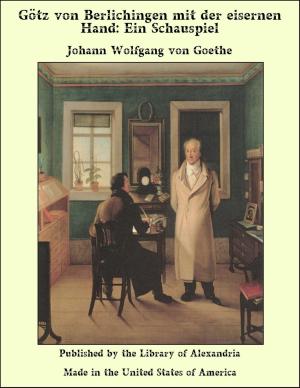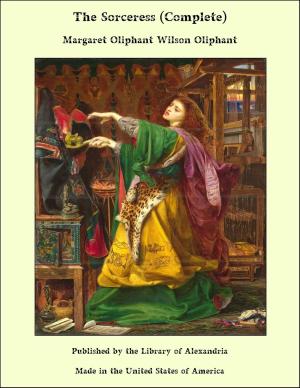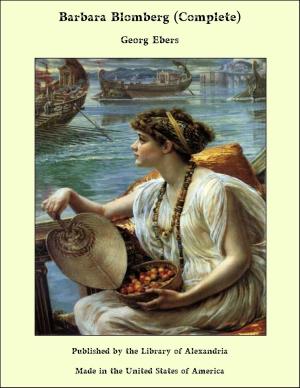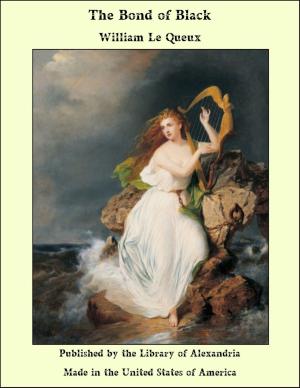Queens of the French Stage
Nonfiction, Religion & Spirituality, New Age, History, Fiction & Literature| Author: | Hugh Noel Williams | ISBN: | 9781465545183 |
| Publisher: | Library of Alexandria | Publication: | March 8, 2015 |
| Imprint: | Language: | English |
| Author: | Hugh Noel Williams |
| ISBN: | 9781465545183 |
| Publisher: | Library of Alexandria |
| Publication: | March 8, 2015 |
| Imprint: | |
| Language: | English |
FEW women in French history have been the subject of more discussion than the young girl whom Molière married, at the church of Saint-Germain l'Auxerrois, on February 20, 1662. Armande Grésinde Claire Elisabeth Béjart, for that was the bride's name, is described in the marriage deed as the daughter of the late Joseph Béjart, écuyer, sieur de Belleville, and of his widow, Marie Hervé. Joseph Béjart, it should be stated, had died shortly before, or shortly after, Armande's birth. The Béjarts were very poor, for the only means which Joseph seems to have possessed wherewith to maintain his pretensions to nobility were derived from a small government appointment (huissier ordinaire du roy ès eaux et forêts de France), and his wife had presented him with "at least eleven children." They lived in the Marais, then the theatrical quarter of Paris. On its northern outskirts, near the Halles, in the Rue Mauconseil, stood the old Hôtel de Bourgogne, the first home of the regular drama; in the centre, in the Rue Vieille-du-Temple, was the theatre which took its name from the quarter, the Théâtre du Marais, where Corneille's Cid was first performed; while nearer the Seine, the playgoer could make choice between the Italian troupes, the Trois Farceurs, Gaultier-Garguille, Gros-Guillaume, and Turlupin, and open-air entertainments on the Pont-au-Change, the Pont-Neuf, and the Place Dauphine. It is, therefore, not surprising that the little Béjarts should have been in the habit of varying the monotony of their poverty-stricken lives by occasional visits to one or other of these spectacles, or that, dazzled by those well-known attractions, which were doubtless as potent in the seventeenth century as they are to-day, the two eldest, Joseph and Madeleine, should have decided, while still very young, to make the stage their profession. What theatre witnessed their débuts we do not know. The majority of authors are of opinion that they joined a company of strolling players which was at this time exploiting Languedoc; M. Larroumet hesitates between one of the unlicensed playhouses of the fairs in the neighbourhood of Paris and a troupe of amateurs, several of which were to be found in the capital; while another of Madeleine's biographers, M. Henri Chardon, thinks that she obtained admission to the Théâtre du Marais, though it appears very improbable that a young and inexperienced actress could have met with such good fortune. However that may be, Madeleine seems to have prospered in her profession from the very outset, as on January 10, 1636, supported by her curateur, one Simon Courtin, her father, a paternal uncle, a "chef du gobelet du roi," and divers other relatives and friends, she appears before the Civil Lieutenant of Paris to request permission to contract a loan of 2000 livres, wherewith to supplement a like sum of her own and enable her to acquire a little house and garden situated in the Cul-de-Sac Thorigny.
FEW women in French history have been the subject of more discussion than the young girl whom Molière married, at the church of Saint-Germain l'Auxerrois, on February 20, 1662. Armande Grésinde Claire Elisabeth Béjart, for that was the bride's name, is described in the marriage deed as the daughter of the late Joseph Béjart, écuyer, sieur de Belleville, and of his widow, Marie Hervé. Joseph Béjart, it should be stated, had died shortly before, or shortly after, Armande's birth. The Béjarts were very poor, for the only means which Joseph seems to have possessed wherewith to maintain his pretensions to nobility were derived from a small government appointment (huissier ordinaire du roy ès eaux et forêts de France), and his wife had presented him with "at least eleven children." They lived in the Marais, then the theatrical quarter of Paris. On its northern outskirts, near the Halles, in the Rue Mauconseil, stood the old Hôtel de Bourgogne, the first home of the regular drama; in the centre, in the Rue Vieille-du-Temple, was the theatre which took its name from the quarter, the Théâtre du Marais, where Corneille's Cid was first performed; while nearer the Seine, the playgoer could make choice between the Italian troupes, the Trois Farceurs, Gaultier-Garguille, Gros-Guillaume, and Turlupin, and open-air entertainments on the Pont-au-Change, the Pont-Neuf, and the Place Dauphine. It is, therefore, not surprising that the little Béjarts should have been in the habit of varying the monotony of their poverty-stricken lives by occasional visits to one or other of these spectacles, or that, dazzled by those well-known attractions, which were doubtless as potent in the seventeenth century as they are to-day, the two eldest, Joseph and Madeleine, should have decided, while still very young, to make the stage their profession. What theatre witnessed their débuts we do not know. The majority of authors are of opinion that they joined a company of strolling players which was at this time exploiting Languedoc; M. Larroumet hesitates between one of the unlicensed playhouses of the fairs in the neighbourhood of Paris and a troupe of amateurs, several of which were to be found in the capital; while another of Madeleine's biographers, M. Henri Chardon, thinks that she obtained admission to the Théâtre du Marais, though it appears very improbable that a young and inexperienced actress could have met with such good fortune. However that may be, Madeleine seems to have prospered in her profession from the very outset, as on January 10, 1636, supported by her curateur, one Simon Courtin, her father, a paternal uncle, a "chef du gobelet du roi," and divers other relatives and friends, she appears before the Civil Lieutenant of Paris to request permission to contract a loan of 2000 livres, wherewith to supplement a like sum of her own and enable her to acquire a little house and garden situated in the Cul-de-Sac Thorigny.















